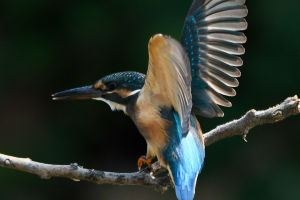It is hard to imagine penguins living anywhere else, but fossils of ancient penguins are found near the equator, and many of these prehistoric seabirds predate the formation of Antarctica's ice sheet.
According to the report, few animals have evolved as much as penguins to survive in the brutal Antarctic. Species like the emperor penguin have layers of insulating feathers, tightly arranged blood vessels to maintain body temperature, and a belly strong enough to withstand wind chills approaching -80 degrees Fahrenheit (about -62 degrees Celsius).
With all these abilities to adapt to cold weather, it's hard to imagine penguins living anywhere else. Yet fossils of ancient penguins are found near the equator, and many of these prehistoric seabirds predate the formation of the Antarctic ice sheet.
They lived through the hottest period in Earth's history when the equator was five degrees Fahrenheit warmer than it is today," says Daniel Ksepka, a paleontologist at the Bruce Museum in the United States. "They essentially evolved in an ice-free environment."
To determine how penguins made the transition from warm tropical waters to polar oceans, Ksepka, and his colleagues recently analyzed the genomes of all extant penguins. However, the genes of modern penguins tell the researchers only so much. Most modern lineages only go back a few million years and cannot account for most of the penguin's 60-million-year-long evolutionary journey.
By comparing the genomes of modern penguins with those of fossil penguins, the team was able to reconstruct the evolution of penguins.
Some of these genes helped penguins gain fat, while others shaped their shriveled wings into streamlined, finned limbs. Some genes even boosted the penguins' immune systems or helped them tolerate low oxygen during deep-sea dives.
At the Natural History Museum in Lima, Peru, paleontologist Rodolfo Salas studied the skull of a fossilized giant penguin that lived 36 million years ago and was about 5 feet tall and 130 pounds (about 59 kilograms) heavy.
The researchers also found genes that helped fine-tune the penguin's eyes to see in the icy depths. While most birds have four types of optic cone cells, one of the penguins' is inactive, hindering their ability to see green and red. Instead, their eyes have adapted to the blue color of the ocean.
But this reveals how successful the penguin's plump and streamlined body build has been. For millions of years, it has been a slow process of change. But emperor penguins that breed in the cold Antarctic winters are the fastest-evolving of all penguins, leading researchers to infer that the colder temperatures have somehow accelerated penguin evolution.
The evolutionary history of penguins, which have evolved from flying seabirds to flightless ocean dwellers and range from the frigid Antarctic to the tropical Galapagos Islands, is one of the wonders of the animal kingdom.
Researchers have conducted the most detailed and in-depth study of the penguin's evolutionary history to date, including identifying a series of genes critical to the evolution of underwater vision, long dives, thermoregulation, diet, and body size.


